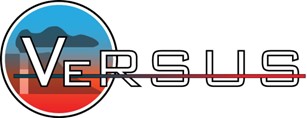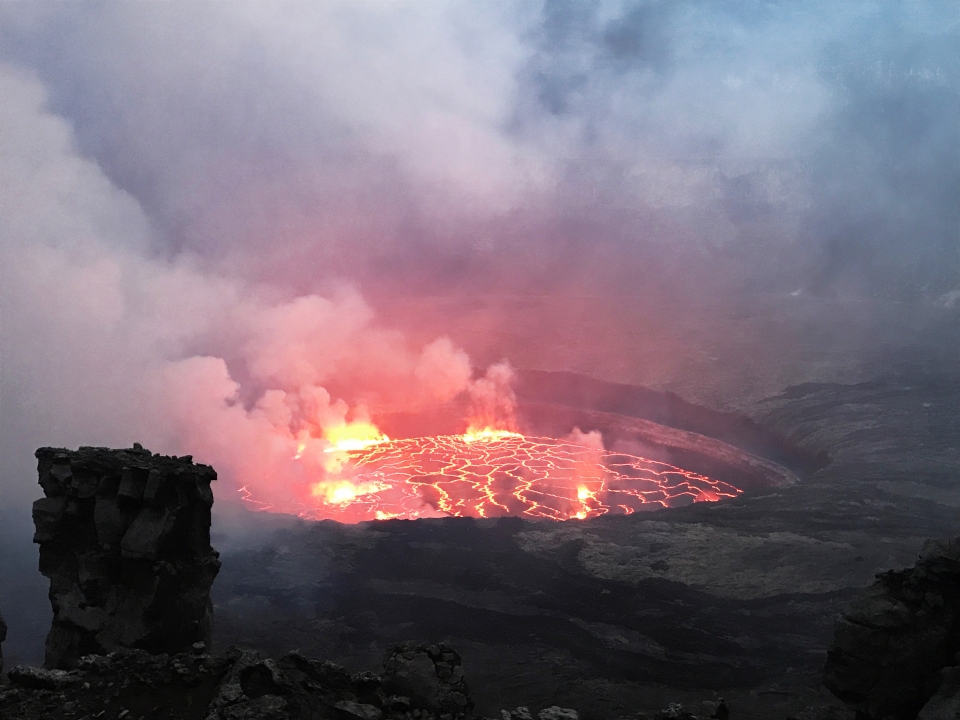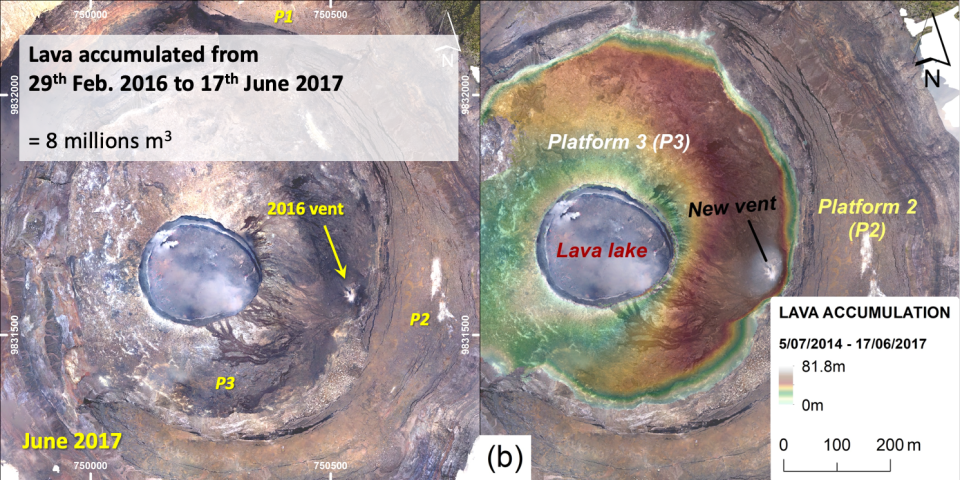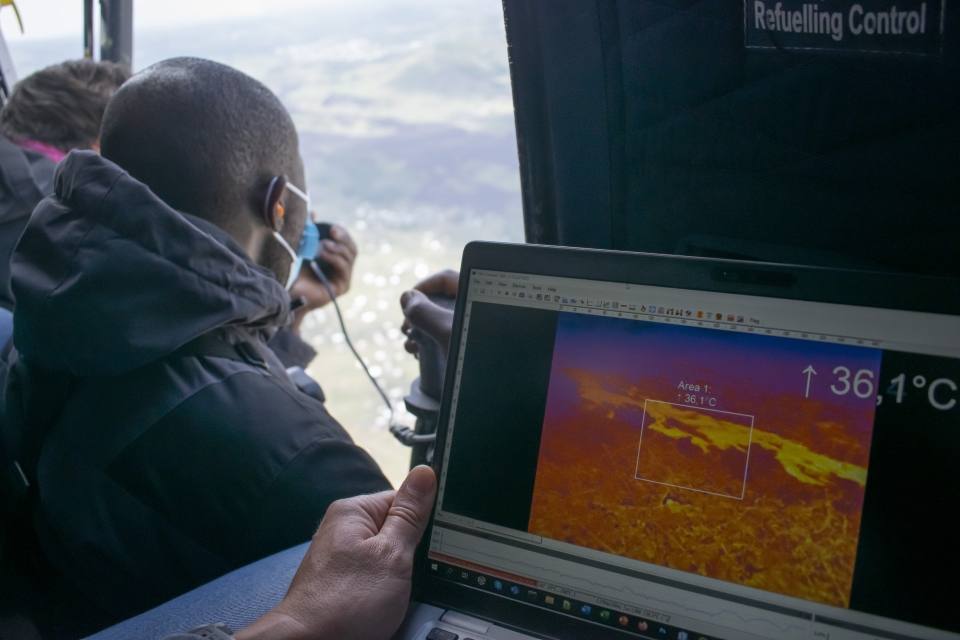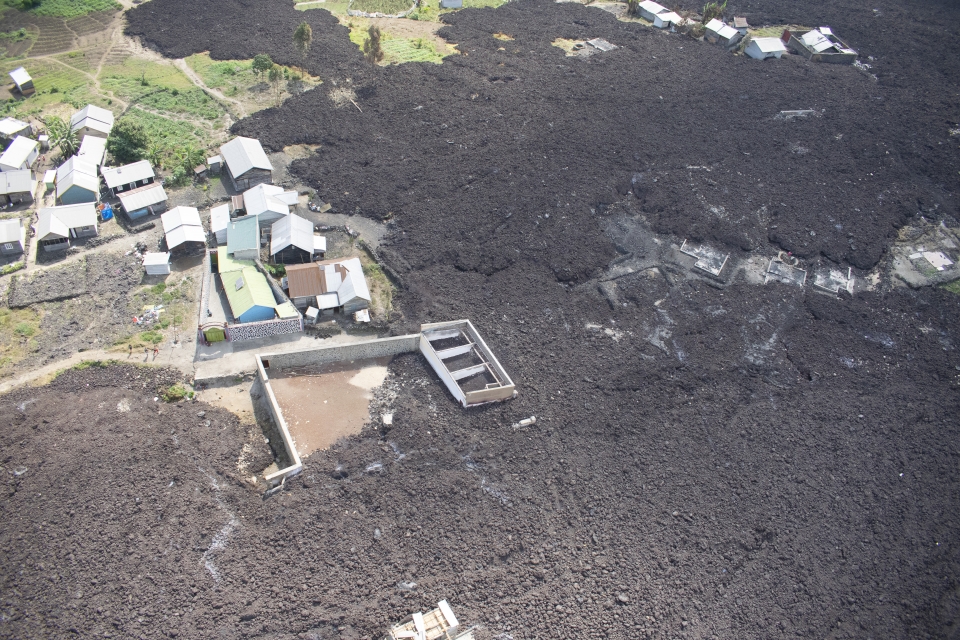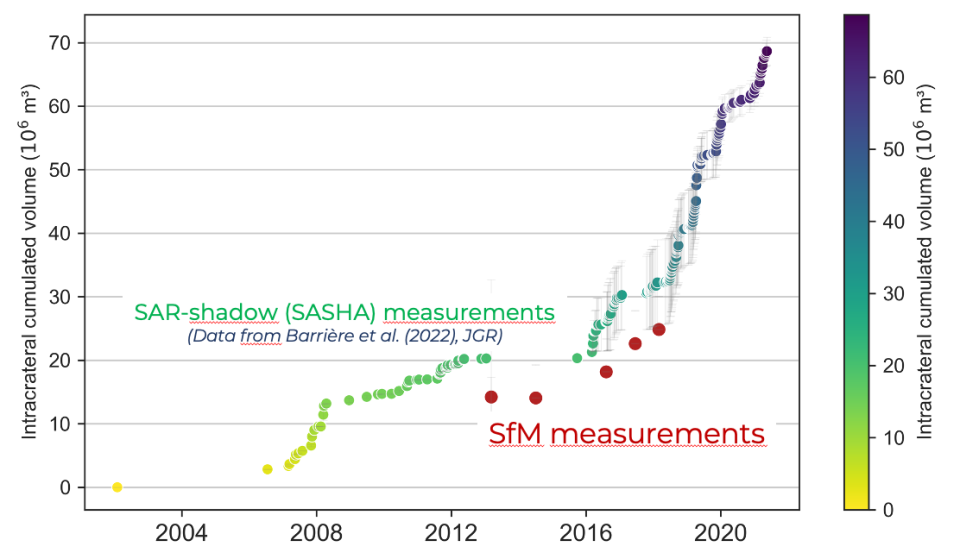Context and objectives
Volcanic eruptions represent a threat for populations living close to active volcanoes. Research focused on volcanic processes ultimately leading to an eruption is therefore crucial. Such research is best tackled through interdisciplinary approaches relying on the synergetic exploitation of observational datasets from ground-based instruments and satellite sensors, notably for remote and under-monitored active volcanoes. The new generation of satellites and sensors with improved sensitivity and spatial and temporal resolutions is a game-changer for volcano monitoring from space, and most remains to be done and explored.
In the mother project RESIST (2014-2019, STEREO-III Programme) and in VeRSUS (the spin-off project of RESIST), we developed new remote sensing tools with this new generation of satellites, which were used to study the eruptive activity of the Virunga volcanoes (Eastern D.R. Congo) and Kīlauea (Hawaii, U.S.A.). VeRSUS focused on
- exploring and developing the capacity of new satellites sensors to provide complementary quantitative information on the dynamics of persistent lava lakes, and
- participating to the better understanding of the source mechanisms of variations in the lava lake activity.
Project outcome
Scientific results
- 6 peer-reviewed articles, including 2 key publications on the mechanisms of Nyiragongo lava lake:
- Smittarello et al. (2022) – Nature 609
- Barrière et al. (2022) – Journal of Geophysical Research: Solid Earth 127
- 2 additional peer-reviewed articles submitted
- 27 oral and poster presentation to national and international workshop and conferences
- Development and/or improvement of processing algorithms/software for radar and multispectral satellite imagery, for lava lake level measurement, thermal hotspot detection, SO2 mass and flux estimates and ash estimates.
- Production of lava lake level, thermal hotspot, SO2 mass, SO2 flux, and ash index time series on the studied sites.
Societal (including environmental) relevance
- Development of new remote sensing tools to study and monitor active volcanoes and lava lakes
- Application of the remote sensing techniques developed in VeRSUS (and the mother project RESIST) during the disastrous 2021 eruption of Nyiragongo
Products and services
Time-series of ground deformation, lava lake level measurements, thermal anomalies, and SO2 and ash emissions over the persistent lava lakes of Nyiragongo, Nyamulagira and/or Kīlauea.
Potential users
- Research scientists
- Volcano Observatories
Outreach
VERSUS: Studying and monitoring open-vent volcanoes from space
VERSUS : Observer l’intérieur des volcans grâce à la télédétection
| Project leader(s): | MRAC/KMMA - Department Earth Sciences | |||
| Belgian partner(s) |
|
|||
| Location: |
Region:
|
|||
| Related presentations: | ||||
| Website: | http://resist.africamuseum.be/VeRSUS | |||
